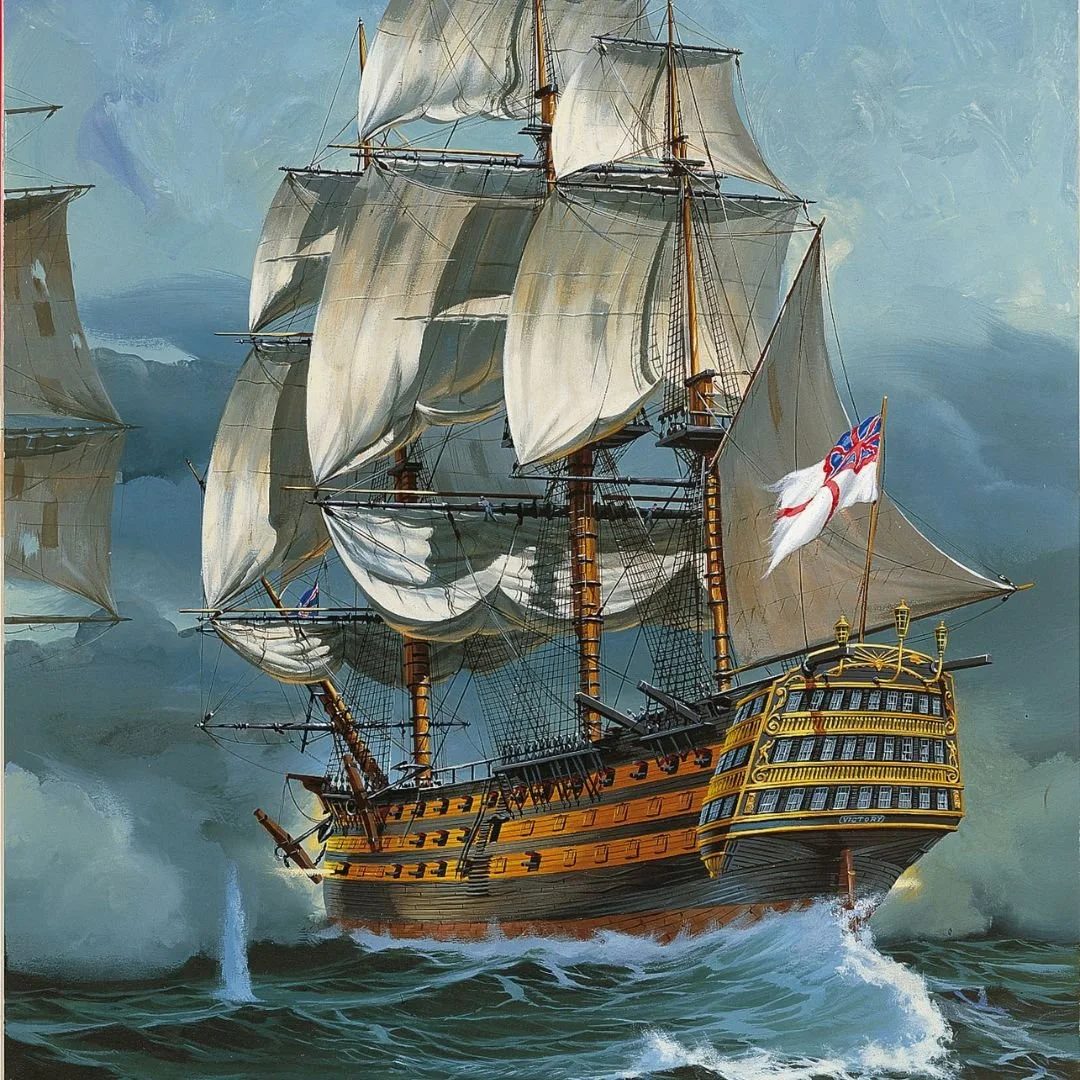HMS Victory: The Oldest Commissioned Warship in the World
Few vessels hold as much historical significance as the HMS Victory.
HMS Victory is the oldest commissioned warship in the world.
Commissioned in 1759 and launched in 1765, the HMS Victory was a first-rate ship of the line, representing the pinnacle of British shipbuilding during the 18th century.
Victory was designed by Sir Thomas Slade and built at Chatham Dockyard.
Over 2000 oak trees were used in the construction of the hull – equivalent to 60 acres of forest.
The final cost to build the iconic ship was £63,176 (over £50 million today).
HMS Victory played a vital role in several key naval battles, most notably the Battle of Trafalgar in 1805, where Admiral Lord Nelson led the British fleet to a decisive victory against the combined Franco-Spanish forces.
Tragically, Nelson lost his life during the battle, but his legacy lives on in the resounding triumph of the Victory.
What made the ship stand out was its innovative design, incorporating multiple gun decks, a sleek hull, and advanced rigging systems.
With its three masts, intricate network of sails, and powerful armament, the Victory represented the cutting-edge technology of its era.
Life aboard the HMS Victory was a complex blend of discipline, camaraderie, and strategic planning.
The ship's crew, consisting of sailors, marines, and officers, lived and worked in tight quarters.
The strict hierarchy and routines ensured the ship's operational efficiency during lengthy voyages, where sailors faced the challenges of navigation, weather, and enemy encounters.
Today, the HMS Victory stands as one of the oldest commissioned warships in the world.
Restored and maintained as a museum ship at the Historic Dockyard in Portsmouth, the Victory offers visitors an immersive experience into the life and times of sailors from the past.
The ship's interior (pictured above) provides a glimpse into the daily routines, living conditions, and strategic considerations that defined naval warfare in the 18th and 19th centuries.
Quickly proving successful, Victory could sail faster than many of its smaller consorts, thanks to the excellent design of the underwater hull.
If you enjoyed this blog post, please follow Exploring GB on Facebook for daily travel updates and inspiration.
Don't forget to check out our latest blog posts below!







